Color page 2 of 9
Color Temperature
Color temperature is one of the physicists’ ways of describing color. Because our theatre light sources obey the laws of physics, it is helpful to understand the concept. Color temperature is measured in Kelvin.
Important concepts about color temperature:
- The lower the color temperature of the source, the warmer the color of the light.
- The higher the color temperature of the source, the cooler the color of the light.
Most stage lighting instruments accept lamps from different manufacturers and different types. Tupically these lamps produce light at 3200° K when full. When the instrument is dimmed, however, the temperature lowers. This visible result of change in color temperature is known as “Amber drift”. Often as lamps age, their color temperature also lowers but at a much more gradual rate.
| Many LED lamps don’t “amber drift”; they can fade without changing color. Some high-end fixtures can even mimic the look of amber drift to more closely match traditional tungsten lamps. |
Below left: if amber drift didn't occur.
Below right: screen capture from video.

Our primary experience with light and seeing color has developed using the sun as our baseline. For the most part, light from the sun comes to us in parallel rays and a very broad “spectral profile” meaning that most colors are represented nearly equally - glorious white light.
Incandescent sources are warmer-leaning than the sun when we look at their spectral profile. They show a curve which is much more gradual than most artificial sources, a fact which helps color reproduction and explains, in part, why lighting designers favor their use.
Our definition of white colored light loosely means that all colors are represented. Our eyes and brain are both adaptable and smart enough to accept a range of light as “white”, which we'll examine next.
Fluorescent light sources are actually created by just a few narrow beams of radiation discharge; a wider spectrum, the reason we see whitish light, is due to the phosphorus coating in the tube. Depending on the exact mixtures in use, manufacturers are able to modify the tint of the fluorescent light. Although it may appear to be white the actual spectral profile is considerably uneven, which is the reason why fluorescent lighting is generally considered unflattering in color.
So although fluorescent tubes may be considered “cool white”, “daylight”, or “warm”, and their overall Kelvin rating is within “white”, because of their uneven spectral profiles, they generally have poor color reproduction qualities.
LED light sources generally have similar issues; typically, their spectral profiles are also very uneven, although that technology in particular, is advancing rapidly.
Some examples of Kelvin equivalents:
- Noon time sunlight has a color temperature of about 5500 degrees Kelvin.
- Indirect light from the North sky has a color temperature of about 10,000 degrees Kelvin.
- Conventional incandescent lamps, as in our homes, have a color temperature of about 2850 degrees Kelvin.
- Tungsten-incandescent lamps that we use in our stage lighting instruments have a color temperature from 3000 degrees to 3200 degrees Kelvin.
| Color temperature theory has a great deal of influence when we work with photographic film. Most film, for example, is rated to accept 5500 degrees Kelvin (sunlight) as white. Video and digital cameras are much more forgiving, as they can be adjusted to accept different light sources as white (called “white balancing”). |
The color of sunlight is often affected by a variety of conditions. Cloud cover has a blue tint because it filters out red. Light streaming through foliage often has a greenish tint as the light bouncing off the leaves has some of the red absorbed on its way.
Primarily, sunlight has been affected by scattering; as the light passes through fine particles in the air, the light is diffracted. Rayleigh's Law states that short wavelengths are scattered more than long ones. This scattering explains the blue of the sky and the “cool” haze that appears before objects in the distance. Rayleigh's law also explains why white clouds at sunset are colored as the result of scattering blue light and why red light transmits a greater distance than blue. We're so conditioned to seeing distant objects with a blue tint that this effect partially explains why inherently warm-colored objects appear to be closer to us than cool-colored objects.
A spectrophotometric analysis of a light source or a subtractive light filter shows how the energy is distributed over the spectrum of wavelengths or light colors. There are examples of spectrophotometric graphs in some of the stage lighting color filter swatch books, and on the manufacturer’s websites.

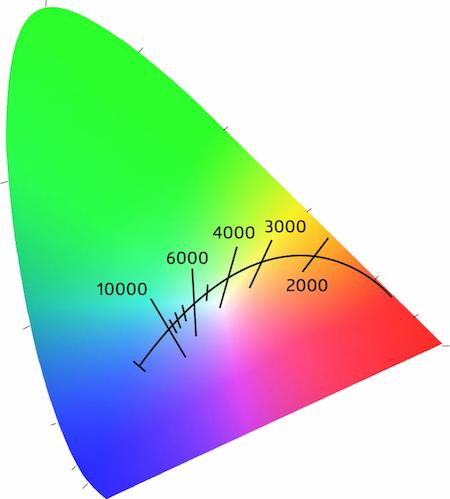
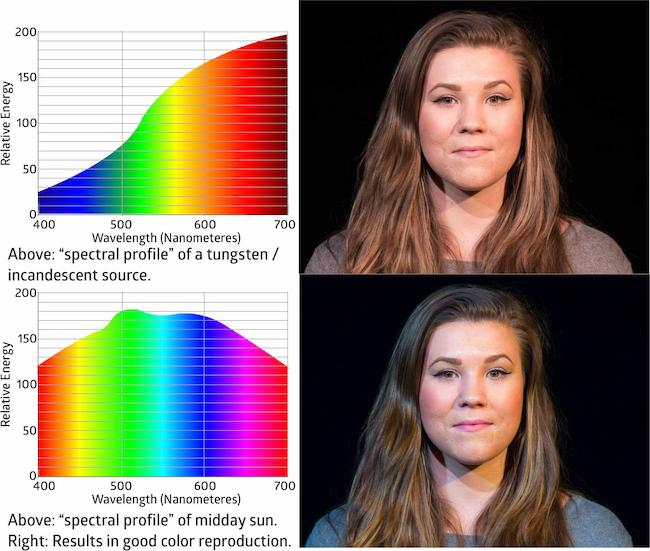
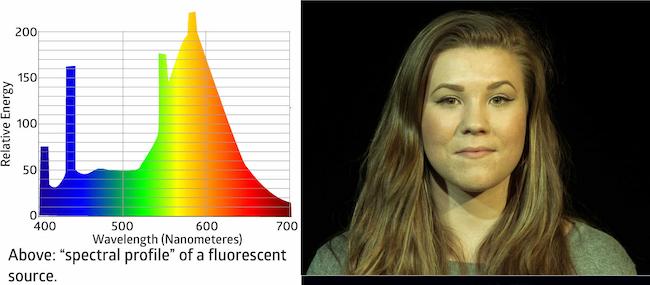
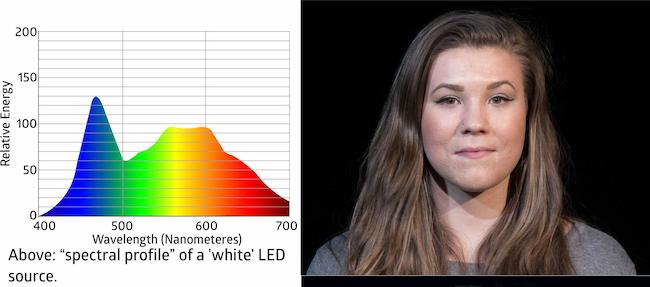
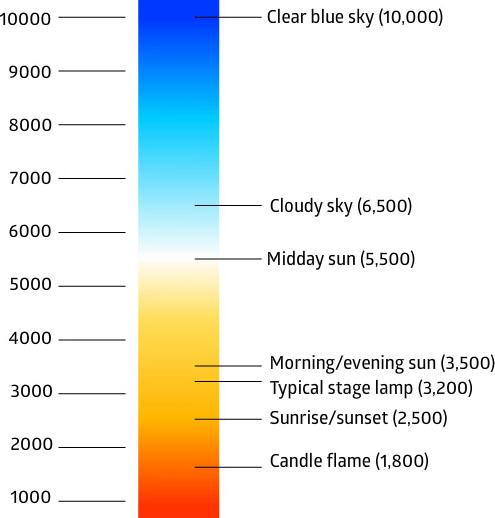

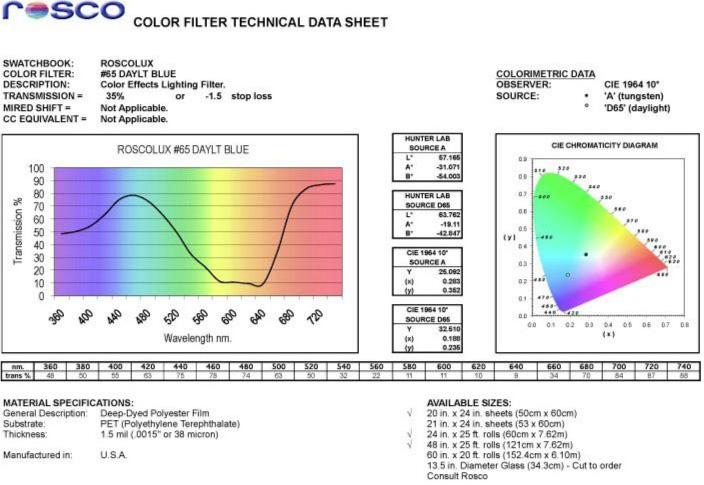
 © Multimakers Multimedia
© Multimakers Multimedia